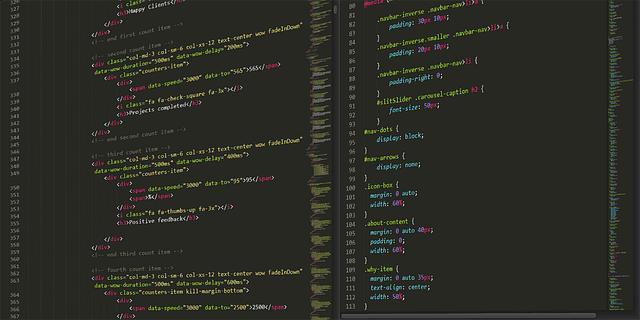In the world of web-based programming, speed is a crucial factor. How can ReactJS, a library that lets programmers develop complex applications, achieve such high speeds? What processes have been implemented to achieve such a high level of efficiency? And what makes ReactJS so fast?
It is well known in the field that the efficient use of resources is essential for achieving high speed in programming. This is especially true when it comes to web development, where time and resources are limited. ReactJS’ ability to optimize code and efficiently manage resources allows it to achieve high speeds, as confirmed by numerous online resources, such as the Stack Overflow blog, Google Developers’ blog, and Mozilla’s blog on web development.
In this article, you will learn how ReactJS utilizes its optimized code and resources to achieve high speed. We will discuss the various techniques used by ReactJS to optimize code and save time, such as virtual DOM, component-based architecture, and more. We will also examine how ReactJS leverages the latest technologies, such as HTML5 and WebGL, to its advantage, as well as its use of the React Native framework for cross-platform development.
Finally, we will look at some of the real-world applications that are powered by ReactJS and explore how developers are using ReactJS to create amazing user experiences. With the knowledge and tools provided by this article, you will have a better understanding of how ReactJS is able to offer such impressive speeds and develop more efficient applications.

Definitions: ReactJS
ReactJS is a JavaScript library created by the social media giant, Facebook. It is used to build efficient user interfaces that are scalable and fast. ReactJS is different from other JavaScript libraries because it works on the concept of component-based architecture, allowing developers to work with smaller, independently reusable pieces of code. This allows for increased modularity, making it easier to manage large projects.
One of the key features of ReactJS is the Virtual DOM (Document Object Model). The Virtual DOM is an in-memory representation of the page’s HTML documents. This allows ReactJS to quickly identify the exact components that need to be changed when a user interacts with an application. This is called “reconciliation”. The Virtual DOM also allows ReactJS to only update the parts of the page that have actually changed, leading to better performance and increased speed.
Another element that makes ReactJS fast is its reusable code. With its component-based architecture, it is easy to reuse components code-wise, making it faster for developers to develop applications. It also helps to keep the codebase clean and organized, making it easier to maintain the project.
Finally, ReactJS also makes use of the one-way data binding concept. This concept means that all the data flows from the parent component to the child components. This allows the user interface to stay in sync with the application’s data. As a result, ReactJS is able to reduce the number of renders and re-renders, and the time it takes to render a page is drastically reduced.
In summary, ReactJS is a JavaScript library created by Facebook that is used to build fast and efficient user interfaces. It makes use of the Virtual DOM, reusable code components, and one-way data binding concept to deliver lightning-fast performance.
Uncovering the Speed Secrets of ReactJS
Uncovering the Speed Secrets of ReactJS
Lightweight and High Performance
ReactJS is a popular open source JavaScript library used for building user interfaces and has a wide range of applications, ranging from the user interfaces of web apps to mobile apps. One of the key reasons for this popularity is its lightweight and high performance. ReactJS is very lightweight compared to other similar frameworks and libraries, and this offers several advantages in terms of speed. It also makes for a snappy and responsive user experience. The lightweight nature of ReactJS allows it to perform tasks quicker, leading to faster page rendering.
Virtual DOM
Another factor that gives ReactJS its speed is its use of the virtual DOM. The virtual DOM is a virtual representation of the HTML DOM that acts as an intermediary between the UI and the JavaScript code. It is a key improvement over the HTML DOM because it is faster to update and so leads to quicker page updates and faster response times. This is especially helpful for large applications with a lot of data and components as it reduces the amount of time spent re-rendering the page. In addition, the virtual DOM also means that the page does not have to be completely re-rendered each time an update is made, reducing the time taken to update the page.
Component-Based Architecture
ReactJS utilizes a component-based architecture, which allows it to render pages faster. This means that all the pieces of a given web page are divided into different components. Each component encapsulates its own state and behavior and can be re-used, as it does not affect any other components. This makes it easier to re-render a specific part of the page, as the components don’t need to be re-rendered each time the page is. This also helps when it comes to troubleshooting and debugging, as it allows developers to easily identify and fix issues with specific components rather than having to debug the entire page.
Asynchronous Rendering
Finally, ReactJS utilizes asynchronous rendering which helps to ensure it is able to render pages quickly. This essentially means that rather than having one thread that handles all the work, it uses multiple, asynchronous threads to allow it to handle multiple tasks at once, without having to wait individual tasks to complete. This has a big impact on the speed of ReactJS as it is able to optimize the number of CPUs, memory, and disk to maximise performance.
Conclusion
As can be seen, the speed of ReactJS is the result of a combination of factors. Its lightweight nature makes it perform faster, as does its use of the virtual DOM, its component-based architecture and its use of asynchronous rendering. Together, these make ReactJS a powerful and fast JavaScript library.
Exploring the Performance Boosts ReactJS Offers
1. Understandment the Boosts
One of the most important questions for web app developers to consider is how to maximize the performance of their applications. ReactJS has recently gained wide popularity due to its ability to improve the performance of web applications in various ways. But what exactly makes ReactJS so fast? To better understand the performance boosts that ReactJS offers, it is essential to examine the key advantages it provides over other frameworks and technologies.
2. Identifying the Benefits
The primary benefits of ReactJS come from its ability to break complex applications into components that can be manipulated independently. This makes updates to components much faster and more efficient, while providing a higher level of maintainability. Additionally, it uses virtual DOMs, which allow the developers to update a specific area of the webpage without actually changing the entire DOM structure. Furthermore, ReactJS also benefits from the usage of efficient algorithms and techniques, such as event delegation and batching of DOM operations. All of these techniques together help reduce loading time and improve user experience.
3. Uncovering the Solution
Fully grasping how to take advantage of the performance benefits offered by ReactJS is often overlooked by developers. Implementing best practices such as optimizing significant amount of components instead of working in large chunks, and leveraging useful features like server-side rendering and async rendering can go a long way towards optimizing performance. Additionally, it is also important to choose the right technologies and design patterns to ensure that the application is easy to maintain and improve in the future. By taking advantage of the various attributes of ReactJS, developers can make their applications faster and much more efficient.
Overall, ReactJS offers various performance benefits that make it a great choice for web applications. By breaking applications into components, using virtual DOMs, and employing various efficient algorithms, ReactJS is able to reduce loading times and optimize user experience. Additionally, utilizing best practices and carefully choosing the right technology and design patterns can help developers maximize their application’s performance. With proper understanding and implementation, web developers can use ReactJS to give their applications an impressive performance boost.
Building Fast and Efficient Apps with ReactJS
ReactJS: A High-Speed Application Development Framework
Would you like to create web applications that perform to the highest degree of efficiency and speed? With the ReactJS development framework, you can do just that. ReactJS boasts a unique blend of background development technologies, allowing it to operate as a high-speed platform ideal for modern applications.
The Focus on Performance
At the heart of ReactJS, lies its intent to create web applications that offer the highest performance levels. ReactJS’ approach to development is geared toward utilizing existing technologies and languages in order to create lightning-fast development cycles. Its optimized codebase allows for the flexibility of working on multiple web platforms simultaneously.
How ReactJS Creates High-Performance Applications
To get the most out of the ReactJS development framework, it’s important to use its range of tools and technologies to their full potential. Instead of focusing on individual coding processes for each web platform, one can use the shared JavaScript libraries that ReactJS helps create between web applications. This allows for a greater level of code reusability, thus saving time and money.
In addition, the use of the React Transition Group library helps to create smoother transitions between pages, enhancing user experience with minimal effort. Meanwhile, one-way data binding helps to algorithmically inform the application about what status it needs to be in, ensuring high-speed performance regardless of changes in the codebase.
It’s also important to take advantage of advanced coding features such as classes and modules, as well as virtual DOM, to facilitate better data simulations. Finally, careful structure of components and tech stacks should be followed, allowing developers to create more efficient, faster code.
By embracing excellent coding practices while utilizing the many technologies the ReactJS framework has to offer, developers can create lightning-fast applications that exceed the performance expectations of ever modern user.
Conclusion
Have you ever wondered how ReactJS can be so fast and effective? How can such an efficient software handle such a large amount of data with such ease? ReactJS is a powerful framework that works on the principle of fast and favorable coding that makes it so efficient. Its key features include a powerful virtual DOM, and data should stream across components in an efficient and organized manner.
Given its powerful features, ReactJS has a lot to offer developers. Its speed, flexibility, and performance can greatly improve development speed and save time. Moreover, this popular web development framework works extremely quickly and is capable of handling an immense amount of data.
If you are a developer who wants to get the most out of ReactJS, it’s important to stay up to date on the latest releases. If you want to know more about ReactJS and its features, make sure to subscribe to our blog – we’ll keep you informed with the newest updates and features that this framework can provide. You absolutely won’t want to miss out! The power of ReactJS is undeniable and ever evolving, and we’ll make sure you stay in the loop.
F.A.Q.
1. What makes ReactJS so fast? ReactJS is built on a concept of virtual DOM (Document Object Model) which is a node-based virtual representation of a web page. ReactJS efficiently updates only relevant parts of the DOM tree when the user interacts with the application. This makes it highly efficient in terms of application loading and rendering time. Additionally, ReactJS supports server-side rendering, which adds further to its performance.
2. Is ReactJS optimised for mobile devices? Yes, the ReactJS library is optimised for mobile devices, speeding up content access and response times. ReactJS also utilises the mobile device’s hardware resources such as sensors and memory, allowing for an overall better performing mobile application.
3. What features make ReactJS faster than other libraries? ReactJS has a number of features that make it faster than other libraries. ReactJS employs a virtual DOM that allows React Components to be compared and updated more efficiently than other libraries. Additionally, ReactJS utilises the HTML5 history API to quickly and more securely serve content, as well as support server-side rendering which increases performance.
4. What advantages does ReactJS have over other frameworks? ReactJS is a declarative library, meaning developers only need to indicate what data needs to be retrieved and what changes need to be made in the UI, without having to juggle different JS calls. ReactJS’s unidirectional data flow makes code more predictable and easier to debug, while the component-based architecture allows for better scalability and code reusability.
5. Is ReactJS well documented? Yes, the ReactJS library is well-documented with an extensive resources section. ReactJS has an official guide on its website which covers installation and setup, components, debugging, as well as advanced guides for applying optimisations and integrating other libraries. Additionally, ReactJS has an active community forum which serves as a great source for help and tips.




